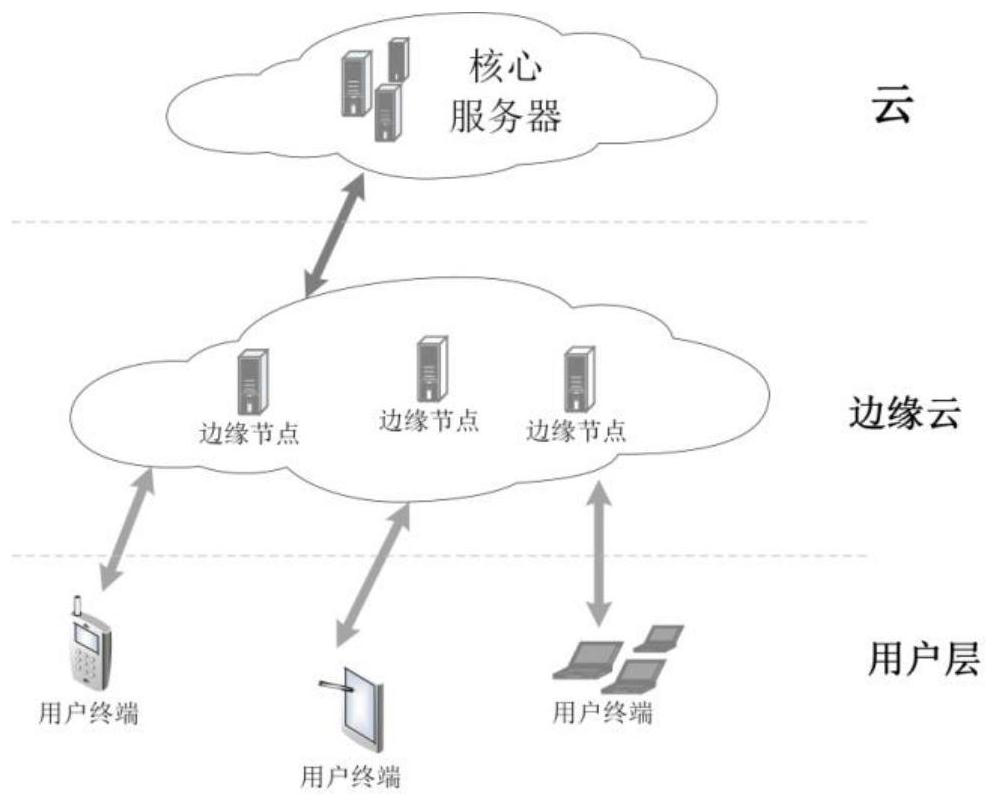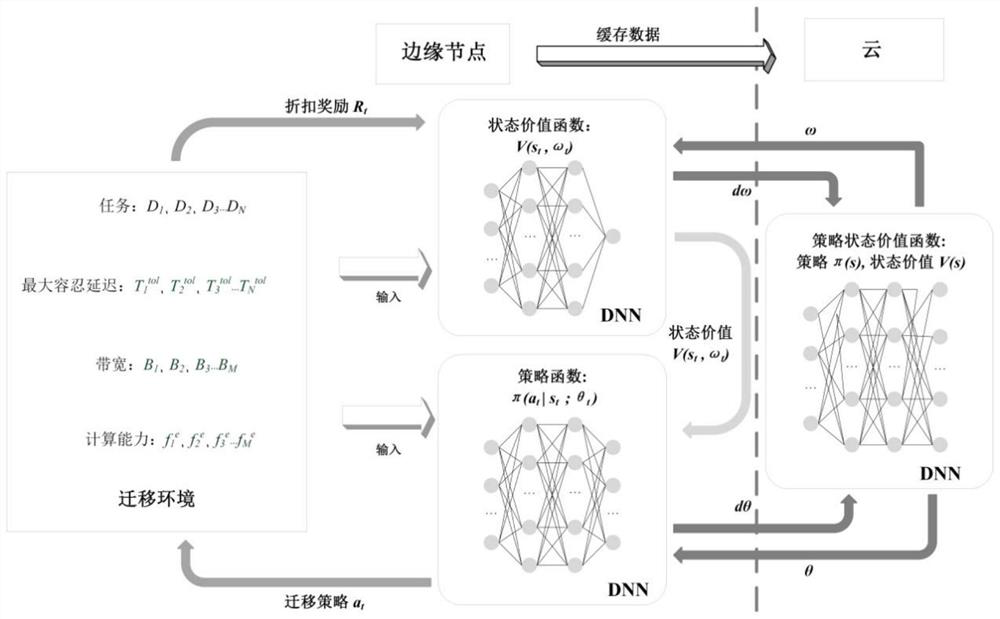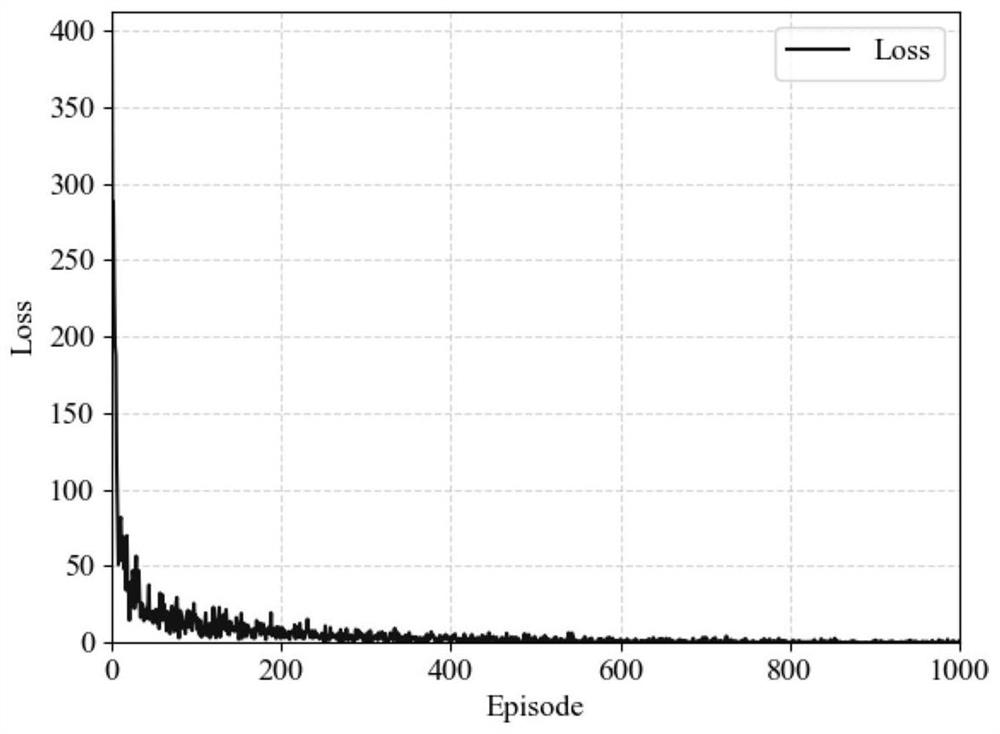A Cloud-Edge Collaborative Computing Migration Method Based on Deep Reinforcement Learning
A reinforcement learning and deep technology, applied in the field of computing migration, can solve problems such as single deep learning or reinforcement learning theoretical optimization problems, complex combination optimization problems, and affecting the processing efficiency of edge nodes, etc., to ensure dynamics and diversity, reduce Correlation, the effect of short method time consumption
- Summary
- Abstract
- Description
- Claims
- Application Information
AI Technical Summary
Problems solved by technology
Method used
Image
Examples
Embodiment Construction
[0025] The technical solution of the present invention will be further described below in conjunction with the accompanying drawings.
[0026] The present invention designs a cloud-edge collaborative computing migration method based on deep reinforcement learning. This method adopts an asynchronous multi-thread method, and at the same time processes each edge node in the edge cloud as a thread. Different edge nodes and environments Perform interactive learning, and each edge node sends the learned gradient parameters to the cloud, and regularly receives new parameters from the cloud to better guide the current edge node to learn and interact with the subsequent environment. This method uses different exploration strategies on different edge nodes to ensure the diversity of its exploration. It does not need to use the traditional experience playback mechanism, and conducts independent training through the state transition experience samples collected by each parallel edge node. ...
PUM
 Login to View More
Login to View More Abstract
Description
Claims
Application Information
 Login to View More
Login to View More - R&D
- Intellectual Property
- Life Sciences
- Materials
- Tech Scout
- Unparalleled Data Quality
- Higher Quality Content
- 60% Fewer Hallucinations
Browse by: Latest US Patents, China's latest patents, Technical Efficacy Thesaurus, Application Domain, Technology Topic, Popular Technical Reports.
© 2025 PatSnap. All rights reserved.Legal|Privacy policy|Modern Slavery Act Transparency Statement|Sitemap|About US| Contact US: help@patsnap.com



